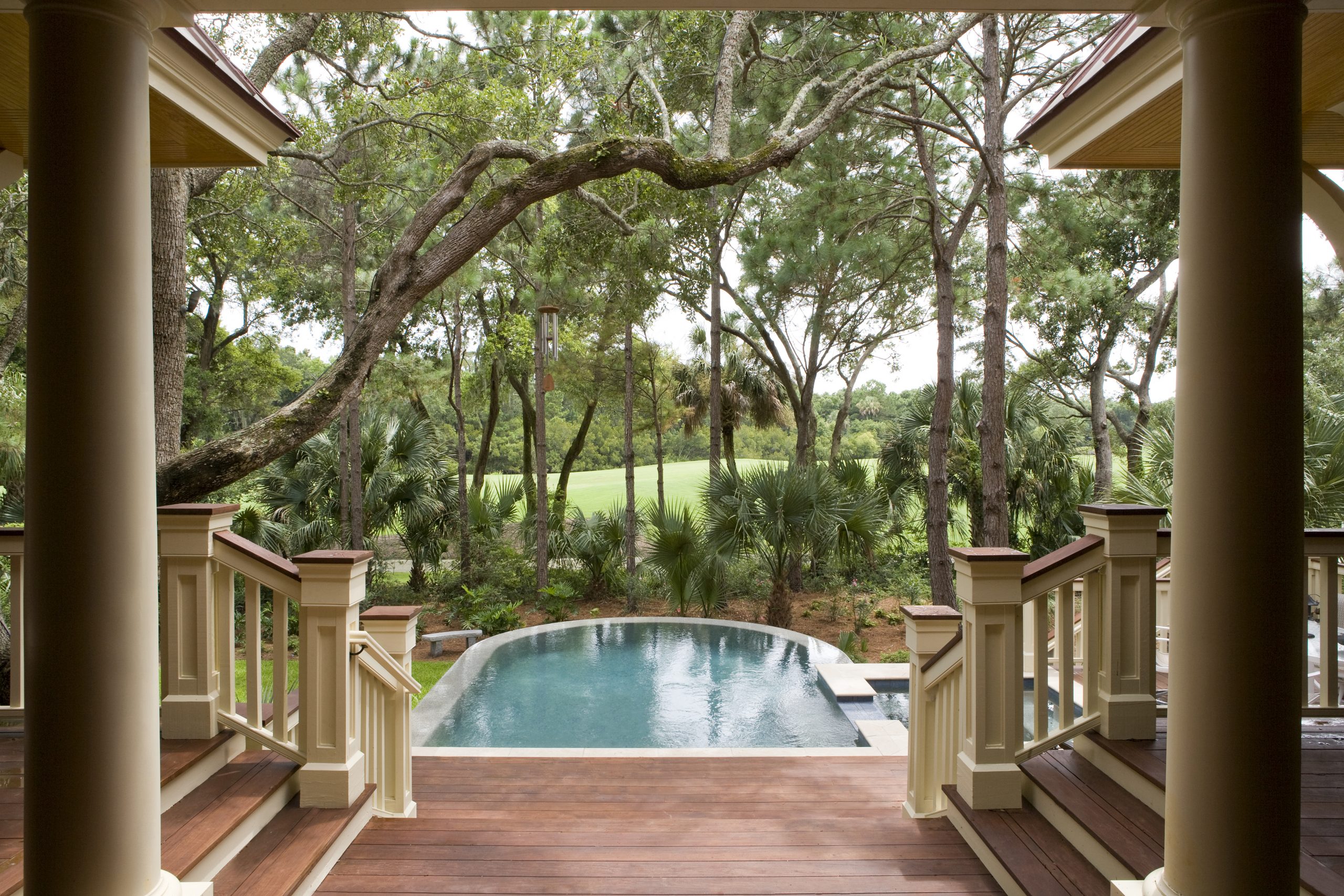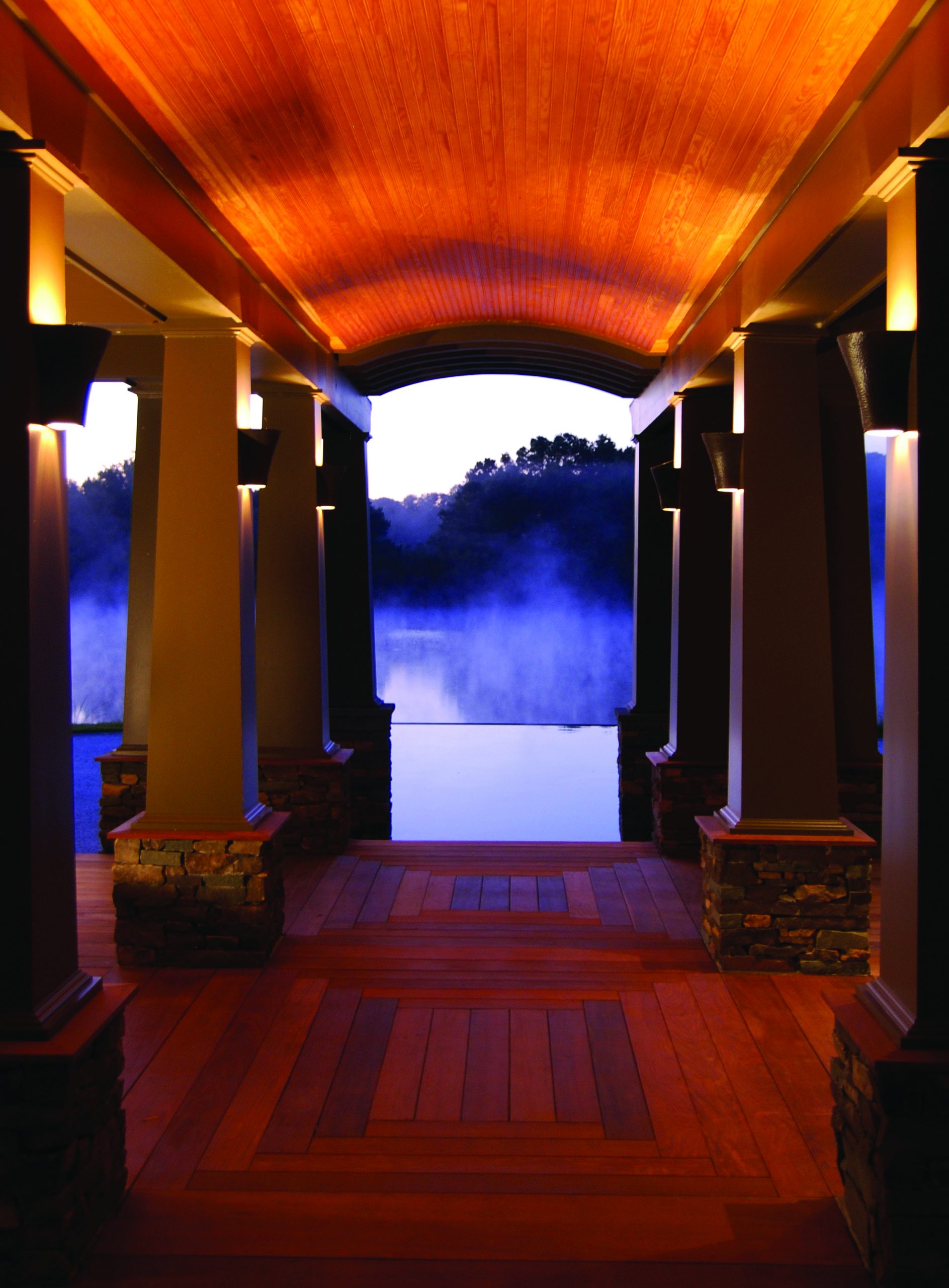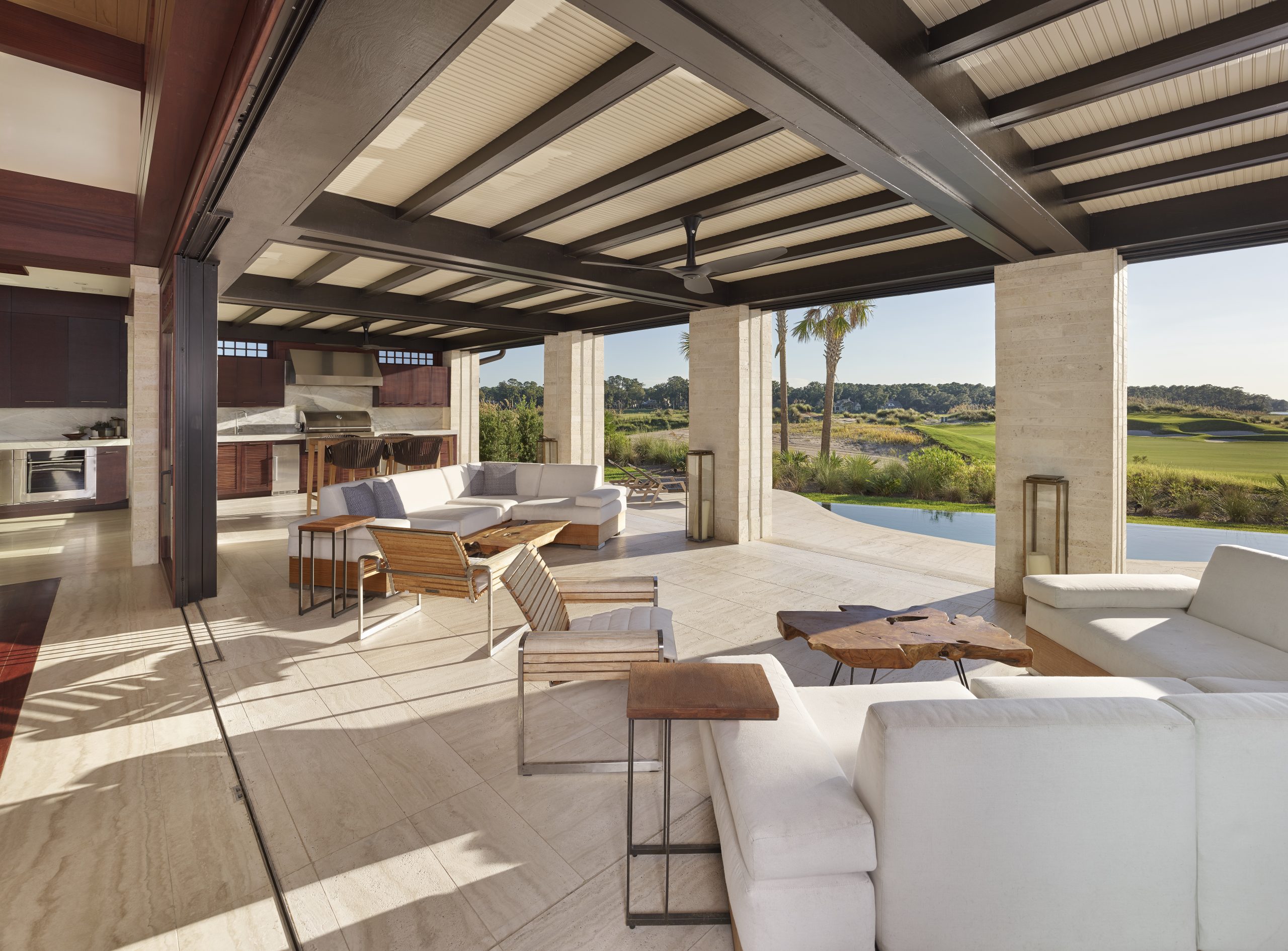
Biophilic Design: A Timeless Design Principle
Introducing organic elements into architectural design is one of the most effective ways of bringing a sense of immutability into a home.
After all, what is organic is timeless. This is why architect Frank Lloyd Wright’s homes remain relevant, because their beautiful, organic elements resonate with nature.
Indeed, this resonance is at the core of biophilic design — a style that connects homeowners to the nature that is around them. And, at Camens Architectural Group, it’s central to every home we design in the Coastal Carolinas.
Over the course of his 40-year career, chief architect Marc Camens has created custom dream homes almost exclusively in response to natural environments, activating biophilic design at every turn.
Blurring the Lines Between Inside and Out

People build homes in beautiful landscapes, like the Coastal Carolinas, because they crave interaction with nature. After all, nature can have a positive impact on our mental, emotional, and physical health.
One of the best ways to integrate the indoors with the outdoors is to blur the edges between the two — it’s a way of ensuring that light, and thereby energy, flows seamlessly in a home.
Somerset Point is one example from Camens’ portfolio of an organic contemporary design that will endure forever because of its integrated relationship to nature.
The home sits on a plinth and includes the element of water throughout — starting with the bridge to the front entrance. The plinth serves as a planter for vegetation and as the base for the pool as it wraps around every exterior feature. The pool also transitions to the river beyond, yielding additional connectivity to the surrounding nature.
Another property — Royal Beach — features magnificent interior spaces that fully open to the exterior and the ocean beyond, including via 24-foot sliding glass walls on the first floor.
 Integrating Organic Materials
Integrating Organic Materials
At Camens Architectural Group, we always like to draw timeless inspiration from the site’s environment in our selection of materials, textures, and color palettes.
After all, introducing natural materials — and even shapes — into the architectural design can help the indoor spaces feel one with the outdoor areas.
In Somerset Point, we used the same Dominican Republic stone on the exterior and repeated it inside to unify the outside and inside while bringing in natural materials.
Royal Beach’s barreled ceilings not only create as much room as possible to capture the grand views from inside, but also reflect the curved, organic lines that are repeated inside.
 Engaging All The Senses
Engaging All The Senses
Successful biophilic design also engages all the senses.
Listening to the gurgling of water; looking at beautiful, organic shapes; the tactile nature of indoor and outdoor plants; even smelling the freshness of the ocean breeze — it all contributes to this sense of being one with nature.
One way we activated the senses in the Royal Beach home was through a reflecting pool on an open-air deck. This upper-level water feature flows into a waterfall that cascades to the elevated pool below.
Design elements such as these don’t only stand the test of time, they beautifully reflect the nature that humans crave in our built environments.
For more examples of biophilic architectural design, we invite you to peruse our portfolio of custom homes, which all resonate with the natural world that surrounds them. Let’s chat about your homebuilding dreams and how we can create similar access to nature.

 Integrating Organic Materials
Integrating Organic Materials Engaging All The Senses
Engaging All The Senses